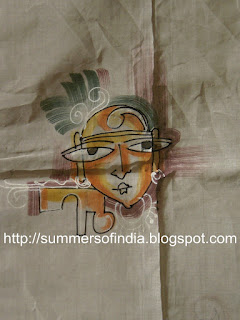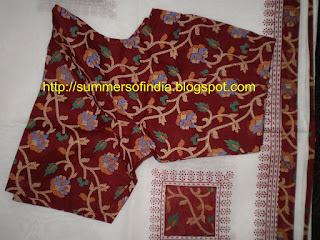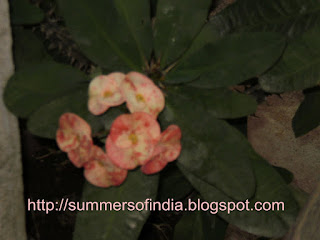Today I am going to show you some folk painting from Bengal. Bengal is very famous for its Kantha work, beautiful cottons and silk textiles, Batiks and terracotta among many. But very few know that it is also famous for its paintings specially on fabrics. The motifs and designs are of coarse folk, but have been beautifully adopted to suit the modern tastes.They are so beautiful, especially on silks not that the cottons are any less.
The fabrics used are basically silks and them fine cottons. These days they are using fabric colours or dyes for painting.
This sari was painted using fabric paints. I have used a fine cotton sari . I was apprehensive of using costly silks. Though I am passionate about painting, especially on fabrics and used to experiment a lot, my painting skills are very limited and I have picked up my brush again after a very long time. The design - I have shamelessly copied from one on my friends sari which she bought on a trip to Kolkotta. I could not come any where near the original one painted by the artist from Bengal. It was so beautiful that I copied the design, but I think I have failed to capture it as it was.
This sari was painted using fabric paints. I have used a fine cotton sari . I was apprehensive of using costly silks. Though I am passionate about painting, especially on fabrics and used to experiment a lot, my painting skills are very limited and I have picked up my brush again after a very long time. The design - I have shamelessly copied from one on my friends sari which she bought on a trip to Kolkotta. I could not come any where near the original one painted by the artist from Bengal. It was so beautiful that I copied the design, but I think I have failed to capture it as it was.
Here it is...
This is the pallu ...design showing Lord Krishna...with his beautiful lotus eyes and peacock feathers...
Closeup look
Another one
Motifs worked on the other part of the sari
Different motifs.
With all my other obligations, I took a long time in painting this. It was difficult since I was copying the design and wanted it to look like the original..LOL! I dont think I want to do any more of these elaborate ones..though I am passionate about painting...






















































